With the adoption of the Indo-Pacific concept vis-à-vis Asia-Pacific, many Chinese scholars and strategists have been alarmed. The development shows inefficiency in the US to protect its interests worldwide causing friction with China. These scholars argue the Indo-Pacific strategy of the US being directed against China and meant to develop an exclusive regional block. Once it’s implemented, the strategy will challenge China’s BRI and global position. In such a situation, Chinese scholars argue that the peace and stability and China’s rise have been impacted and undermined to protect the US interests and position in the region.
With emerging apprehension about the economy, military and maritime disputes, countries’ political narrative throughout the world is to secure their respective national interests under “an open and free environment”. In this regard, at the 2019 ASEAN Summit, held in Bangkok, Thailand, in the ‘ASEAN Outlook on the Indo-Pacific’ (AOIP), the ASEAN countries accepted the term Indo-Pacific vis-à-vis Asia-Pacific, and such acknowledgement changed the way the Indian Ocean and the Pacific Ocean and its maritime and geographical regions will be defined[1]. The acknowledgement carries a lot of relevance and prominence as it provides weight and recognised the former Japanese PM Shinzo Abe’s ‘free and open Indo-Pacific’, ‘Hollywood to Bollywood’ narrative of the US, the ‘Ho-Hum’ idea of the Australian government – adopted Indo-Pacific concept in 2013 – and India’s ‘free open inclusive region’ outlook adopted in 2019.
The Indo-Pacific concept gained currency in 2011, but it was Karl Haushofer, a German geopolitician, who used the term for the first time in his work ‘Indopazifischen Raum’ in the 1920s. Meanwhile, the Indo-Pacific concept was featured in the US National Security Strategy (NSS) 2017, the National Defense Strategy (NDS) 2018 and the Nuclear Posture Review 2018 documents. Later, the US State Department document titled ‘A Free and Open Indo-Pacific: Advancing a Shared Vision’ 2019 was published which emphasised the Indo-Pacific Strategy needs to be sustained among the Quad’s members (the US, Japan, Australia and India). In this regard, India proposed the ‘Indo-Pacific Initiative’ in 2019 which not only meant securing the maritime domain but also ensuring safety and stability in the Indo-Pacific region. As the development is directed more towards securing security and strategic concerns emerged due to the rise of China in recent years, China views itself as the core of this strategy to stop or create hindrance in its peaceful development.
From Asia-Pacific to Indo-Pacific
The adoption of the Indo-Pacific vis-à-vis Asia-Pacific terminology was seen as a significant development, as it involves great significance for New Delhi. The adoption reflects the important role to be played by India in Asia in the coming years. The development could be seen as a nomenclature shift because during the Shangri-La Dialogue in 2017, the former US Defense Secretary James Mattis (January 2017 – January 2019) in his speech used the Asia-Pacific term nine times and used Indo-Pacific once while quoting India’s PM Narendra Modi which drastically changed and in his 2019 Shangri-La Dialogue speech, he uses Indo-Pacific seventeen times and Asia-Pacific once[2]. China on the other was comfortable with the Asia-Pacific concept as it referred to a large landmass including the ocean which China feels it dominates. In contrast, the Indo-Pacific concept focuses more on the maritime aspect of the Indian Ocean and the Pacific Ocean region. China feels constrained and threatened by this change as it sees it as a part of the US Indo-Pacific Strategy to contain China’s rise[3]. As Zhou Bo states ‘the strategy is meant to isolate China’ which he sees as a ‘small-minded approach and which could be dangerous’[4].
From China’s perspective, the use of the concept by the US attracts democracies like India, Japan, Australia and other democracies in Asia, in the wake of the geopolitical change which emerged due to the rise of China. Beijing feels the US’ dominant position has relatively weakened and from a geopolitical and economic perspective, a shift has been witnessed in the Indo-Pacific region. This has forced the US to restructure its alliance structure to counter the rise of China under its Indo-Pacific strategy[5]. The US document titled “A Free and Open Indo-Pacific: Advancing a Shared Vision” shows the top priority placed on the Indo-pacific region by the Trump administration ever since he outlined the idea, in Vietnam in 2017, of a free and open Indo-Pacific where according to him everyone could prosper together[6]. While more than 35 countries support such a vision, it calls for free navigation at the seas, free and fair trade – meant to counter China’s Belt and Road Initiative (BRI) – based on reciprocal nature, a favourable environment for investment led by good governance[7]. In this regard, the US, in the report, stresses that the Indo-Pacific strategy will devote more resources to the region like the USAID has provided US$ 4.5 billion as foreign assistance towards the region to expand the US$ 1.9 trillion trade flowing through the region. The report further argues to ensure the regional order in the region. The report wants everyone – India being a strategic partner of the US, ASEAN, Pacific Islands countries and the Mekong countries – to fulfil its shared responsibilities to ensure the region remains a free and open Indo-Pacific[8].
Beijing’s Understanding of the Indo-Pacific Strategy
While China is more comfortable with the Asia-Pacific narrative, the development and acceptance of the Indo-Pacific has brought China into focus, as Beijing views this change as part of Washington DC’s strategy to contain China and its rise[9]. Wu Shicun, President of the National Institute for South China Sea Studies (NISCSS), Haikou City, China, states the ‘Indo-Pacific strategy of the US being directed against China is meant to develop an exclusive regional block and once it’s implemented, the strategy will challenge China’s BRI, its position in the South China Sea and will be a great strategic concern for Beijing[10]. In this direction, Wu Shicun argued that the US will achieve these objectives through two means. Firstly, to stop China from becoming an absolute power in the Southeast Asian or the Indian Ocean region, the US in its capacity will not allow China to transform maritime issues in its favour and be able to dominate economic development in these regions. Therefore, the US will restrict China’s ability to create any new economic and regional security rules in these regions[11]. Secondly, the US will control the maritime route and the economic agenda of the Indo-Pacific region, and in this direction, the Quadrilateral initiative between the US, Australia, Japan and India – the US has kept India into its fold to maintain the US hold in South Asia and the Indian Ocean – also known as QUAD is meant to keep China away from the process of creating its orders meant for region’s economic and security aspects[12].
Chinese scholars like Xue Li argue that the geopolitical changes brought about by China’s rise are the reason behind the US’ move to boost its Indo-Pacific alliances and strategy, with the Trump administration’s strategy being followed under the Biden Administration to update the rebalancing strategy of Obama administration[13]. On the rivalry between the US and China on the South China Sea and its dispute, Luo Liang argued that US President Trump was more active compared to former US President Obama[14]. During the Obama administration, the US put a hold on its Freedom of Navigation operation (FONOP) between 2012 – 2015 in the South China Sea and cautiously resumed it in 2016 with only three ‘one-off events’. On the contrary, under the Trump administration, they conducted more than 14 FONOPs along with the US-UK joint military operation in the South China Sea[15]. Concerning China’s strategic thinking towards the South China Sea and maritime dispute, to safeguard its national interests and how to respond to the US actions in the Southeast Asian region, Luo states China needs to remain unruffled and be level-headed, and thus prepare itself of all scenarios to safeguard its interest and rights in the South China Sea[16].
As the US labelled China as a revisionist power, the US further views China’s peaceful development theory as void and its relation with China from the Thucydides’ Trap because the rise of China has impacted the US global hegemony. To counter such developments, Dr Hu Shisheng sees the US initiated its Indo-Pacific Strategy which he views as systematic and offensive[17]. As the bonhomie between the US and India has increased in recent years, Dr Hu Shisheng argues India to compete with China and to cater its needs New Delhi is working with Washington DC. Further, as the strategy focuses on how to counter China’s BRI, he states, India’s stand on the BRI reflects New Delhi’s acceptance of the US the Indo-Pacific Strategy as India intends to counter Chinese influence in the Indo-Pacific region. Therefore, he sees as an individual India lacks strength and therefore cannot irritate Beijing immeasurably – for him India lacks sufficient national power[18].
From another perspective, Wu Shicun sees internal and external constraints in the Indo-Pacific Strategy[19]. As he argues the strategy isn’t a top priority in the Trump administration, and the US efforts will be limited especially in regards to transportation and infrastructure and therefore won’t be able to compete with the BRI. Such a statement holds value, as Wu Shicun sees, with the frequent change of officials who are part of the strategy creating hindrances in its implementation. Further, he sees the existence of a difference of opinion as the US gives more emphasis to the security and competition aspect, while ASEAN, Japan, India and Australia stress more on economic cooperation as they are suspicious about Trump’s commitment and are in no rush to fully implement the strategy.
An academic report titled ‘Averting Crisis: American Strategy, Military Spending and Collective Defence in the Indo-Pacific’ published in the University of Sydney on 19th August 2019, attracted much attention because it not only brought the ‘China threat theory’ into the limelight but also that it was reproduced in large numbers at the same time on various western media outlet like Bloomberg and Voice of America[20]. Shi Yongming, in this regard, states this academic report only argues about the US and its hegemonic logic. For example, the deployment of the US military assets in Chinese territories was defensive while China’s similar gestures were viewed as offensive in nature[21]. Taiwan being viewed as an integral part of China, Shi states by showcasing Taiwan as a relevant part of the US missile defence system placed in the Asia-Pacific region, it contradicts China’s One-China policy as the report further argues the US has all rights to interfere in Taiwan affairs[22]. In the Taiwan issue, Yu Donghui argues that the ongoing competition between China and the US has forced Washington DC to enhance its relationship with Taiwan. While formulating a strategy against China, the US rediscovered the strategic value of Taiwan and the ‘Taiwan Card’ could be used against China[23]. Hence, Taiwan has been seen as an important aspect of the reconstruction of the US-China relation, both under the Trump administration and now under the Biden administration. Further, Shi Yongming sees the report as completely driven by the Cold War mentality whose only aim is to project the ‘China threat theory’, create panic, mistrust and an arms race among Chinese neighbours, and cause a confrontation between China and the US.
With the development of regional integration under the Regional Comprehensive Economic Partnership (RCEP) in the Asia-Pacific region, Washington DC finds itself excluded. Therefore, to restrict such Chinese-favoured development, Yang Wenjing argues the development of the Indo-Pacific strategy by the US, therefore, should be viewed as an attempt to ensure the US-favoured regional balance, led by its rules, remain in place in the region[24]. To reconstruct its relationship with China and strengthen its Indo-Pacific strategy, even after the finalisation of the first trade agreement between China and the US, Wu Xinbo sees such uncertainty still remains between both countries[25]. This is so because the Trump administration’s policy towards its relation with China and why the US should restructure its relation with China are based on the NSS Report 2017. The reasons are mentioned below[26]:
- In the post-Cold War period, the US policy from Clinton to Obama of getting along with China has only resulted in its rise and now it’s challenging the US global hegemony.
- With the failure to check the rise of China, Beijing continued to increase its influence and ability to challenge the US and subsequently became the US strategic competitor.
- Being labelled as a revisionist country, China was able to undermine international order to its advantage.
- Against China, the goal of the US should be to slow down Beijing and, if required, interrupt its rise, thus ultimately stopping China to replace the US as the global hegemon.
In this regard, Beijing Xiangshan Forum occupies great relevance for China since 2006 as it provides China with an international platform to project its viewpoint and understanding of international security and defence dialogue. As Huang Panyue asserts, the international relations of the modern times was dominated by western countries with war, power, and alliance being their tools to execute their national policies, and thus being able to use unfair means and methods like colonisation, aggression, plundering, bullying and expansion which only resulted into conflicts or large scales wars like both World Wars or the Cold War[27]. Therefore, under this rapid integration process which is currently taking place globally, Huang Panyue states that an individual country cannot seek absolute security and it also cannot gain stability from the turmoil going on in another country. Therefore, universal security should be attempted[28]. Recently, the Biden administration announced its new Indo-Pacific strategy which pledges support for regional connectivity, trade and investment and furthers the policy, as a continuation of his predecessor’s, to keep the region as the core of the US interest to address the Chinese threat[29].
In recent years, since the Obama administration, the White House has focussed particular attention on supporting India’s continued rise and regional leadership which was reflected in the I2U2 and establishment of the IPEF. The Biden administration has continued to emphasise on the Indo-US cooperation and relationship under its strategy towards the Indo-Pacific region.
Conclusion
As the Chinese military strategy states Beijing will not attack first on any country unless someone attacked them first and therefore it wants the world to see its missiles, weapon and other military-related development programmes as a means to defend itself and to ensure and safeguard its national security and interest[30]. Adm. Phil Davidson, Head of the US Indo-Pacific Command in his report to Congress requested US$ 20 billion over 6 years and if all of his lists are fulfilled, then the US military capabilities on each front – land, space, air, cyber domain, navy and others – will be greatly enhanced as these developments only signal that the US is shifting its focus in the Indo-Pacific region[31]. Since the adoption of the Indo-Pacific, China’s actions and response to any West-led initiative have become vocal and assertive, which further impacts the peace and stability of the region. However, since the US’ approval of the concept in 2019, the region has witnessed various strategic initiatives and development which further causes China to be cautious. With Indo-Pacific being the norm, China has restructured its response to the US-led initiative to further secure its interest and position worldwide causing great power competition in the US-China relationship in the region.
References
- Kumar, Amb (Retd) Yogendra. 2019. “India’s maritime diplomacy in the Indo-Pacific in pursuit of its national objectives.” Ministry of External Affairs, Government of India. October 18. Accessed May 9, 2020. https://www.mea.gov.in/distinguished-lectures-detail.htm?852.
- Ibid.
- Dobell, Graeme. 2018. “Indo-Pacific versus Asia–Pacific as Makinder faces Mahan.” Australian Strategic Policy Institute. June 5. Accessed May 6, 2020. https://www.aspistrategist.org.au/indo-pacific-versus-asia-pacific-as-makinder-faces-mahan/.
- Bo, Zhou. 2019. “A US Indo-Pacific strategy that isolates China is small-minded and dangerous.” South China Morning Post. June 27. Accessed May 6, 2020. https://www.scmp.com/comment/opinion/article/3016115/us-indo-pacific-strategy-isolates-china-small-minded-and-dangerous.
- Chen, Dingding. 2018. “The Indo-Pacific Strategy: A Background Analysis.” Institute for International Political Studies. June 4. Accessed May 6, 2020. https://www.ispionline.it/it/pubblicazione/indo-pacific-strategy-background-analysis-20714.
- Department of State. 2019. “A FREE AND OPEN INDO-PACIFIC Advancing a Shared Vision.” November 4. Accessed May 7, 2020. https://www.state.gov/wp-content/uploads/2019/11/Free-and-Open-Indo-Pacific-4Nov2019.pdf.
- Ibid.
- Ibid.
- Chen, Dingding. 2018. “The Indo-Pacific Strategy: A Background Analysis.” Institute for International Political Studies. June 4. Accessed May 6, 2020. https://www.ispionline.it/it/pubblicazione/indo-pacific-strategy-background-analysis-20714.
- Shicun, Wu. 2020. “Deepening China-Sri Lanka Belt and Road Cooperation and Facilitating Win-Win Cooperation in the Indian Ocean.” National Institute for South China Sea Studies. January 13. Accessed May 6, 2020. http://en.nanhai.org.cn/index/research/paper_c/id/313.html.
- Ibid.
- Ibid.
- Chen, Dingding. 2018. “The Indo-Pacific Strategy: A Background Analysis.” Institute for International Political Studies. June 4. Accessed May 6, 2020. https://www.ispionline.it/it/pubblicazione/indo-pacific-strategy-background-analysis-20714.
- Liang, Luo. 2017. “Will Trump Be Tougher Than Obama on the South China Sea?” China US Focus. August 28. Accessed May 06, 2020. https://www.chinausfocus.com/peace-security/will-trump-be-tougher-than-obama-on-the-south-china-sea.
- Shicun, Wu, and Jayanth Colombage. 2019. “Indo-Pacific Strategy and China’s Response.” Institute for China-America Studies. October. Accessed May 3, 2020. https://chinaus-icas.org/wp-content/uploads/2019/10/Indo-Pacific-Strategy-and-Chinas-Response.pdf. Also See. Liang, Luo. 2017. “Will Trump Be Tougher Than Obama on the South China Sea?” China US Focus. August 28. Accessed May 06, 2020. https://www.chinausfocus.com/peace-security/will-trump-be-tougher-than-obama-on-the-south-china-sea.
- Ibid.
- Global Times. 2020. “China seeks pragmatic cooperation despite US Indo-Pacific Strategy.” Global Times. January 1. Accessed May 04, 2020. https://www.globaltimes.cn/content/1175403.shtml.
- Ibid.
- Shicun, Wu. 2020. “Deepening China-Sri Lanka Belt and Road Cooperation and Facilitating Win-Win Cooperation in the Indian Ocean.” National Institute for South China Sea Studies. January 13. Accessed May 6, 2020. http://en.nanhai.org.cn/index/research/paper_c/id/313.html.
- Yongming, Shi. 2019. “Sydney think tank makes up excuses for US MRM deployment in Asia Pacific.” China Military Online. August 26. Accessed May 4, 2020. http://eng.chinamil.com.cn/view/2019-08/26/content_9601818.htm.
- Ibid.
- Ibid.
- Donghui, Yu. 2020. “After the beautiful appearance: What is the relationship between the speed-up driving and braking in the US-Taiwan relationship?” CRNTT. January 15. Accessed May 7, 2020. http://www.crntt.cn/zpdx/78411.html. And. Xinbo, Wu. 2020. “The Trump administration’s ambitions and limitations to reconstruct Sino-US relations.” China Institute of International Studies. March 27. Accessed May 7, 2020. http://www.ciis.org.cn/gyzz/2020-03/27/content_41105157.htm.
- Wenjing, Yang. 2019. “Indo-Pacific strategy may reshape relations.” China Daily. November 21. Accessed May 5, 2020. https://www.chinadaily.com.cn/a/201911/21/WS5dd632d6a310cf3e35579097.html. Also, See. Global Times. 2020. “China seeks pragmatic cooperation despite US Indo-Pacific Strategy.” Global Times. January 1. Accessed May 04, 2020. https://www.globaltimes.cn/content/1175403.shtml.
- Xinbo, Wu. 2020. “The Trump administration’s ambitions and limitations to reconstruct Sino-US relations.” China Institute of International Studies. March 27. Accessed May 7, 2020. http://www.ciis.org.cn/gyzz/2020-03/27/content_41105157.htm.
- Ibid
- Panyue, Huang. 2019. “Focusing on Beijing Xiangshan Forum: Maintaining the International Order with the UN Charter at its core.” China Military Online. October 11. Accessed May 6, 2020. http://eng.chinamil.com.cn/view/2019-10/11/content_9648923.htm.
- Ibid.
- Freeman, Carla, Daniel Markey, and Vikram J. Singh. 2022. “A Closer Look at Biden’s Indo-Pacific Strategy .” United States Institute of Peace. March 07. Accessed August 15, 2022. https://www.usip.org/publications/2022/03/closer-look-bidens-indo-pacific-strategy.
- Yongming, Shi. 2019. “Sydney think tank makes up excuses for US MRM deployment in Asia Pacific.” China Military Online. August 26. Accessed May 4, 2020. http://eng.chinamil.com.cn/view/2019-08/26/content_9601818.htm.
- Ibid.
Disclaimer: The views expressed in this article are of the author solely. TheRise.co.in neither endorses nor is responsible for them. Reproducing this content without permission is prohibited
About the author
Kashif Anwar, is a Research Associate at the Centre for Air Power Studies (CAPS), New Delhi, has an M.Phil in International Studies. His area of research interests is China, the US, India, geo-strategy, geo-economic, military technology, and geopolitical developments in the Indo-Pacific region. He has presented research paper at Jamia Millia Islamia and the Christ (Deemed to be University) Delhi NCR and published his papers in the Geopolitics, Financial Express, the Defence Horizon Journal and TheRise.

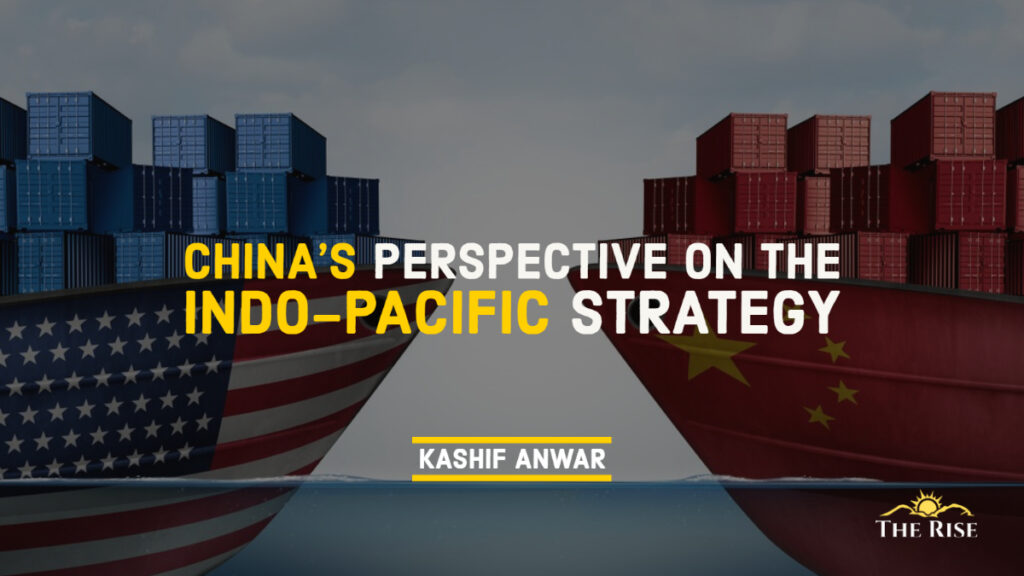


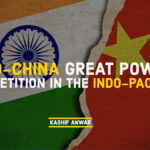
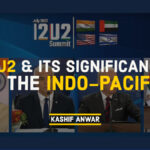
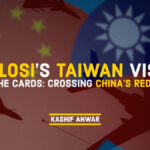


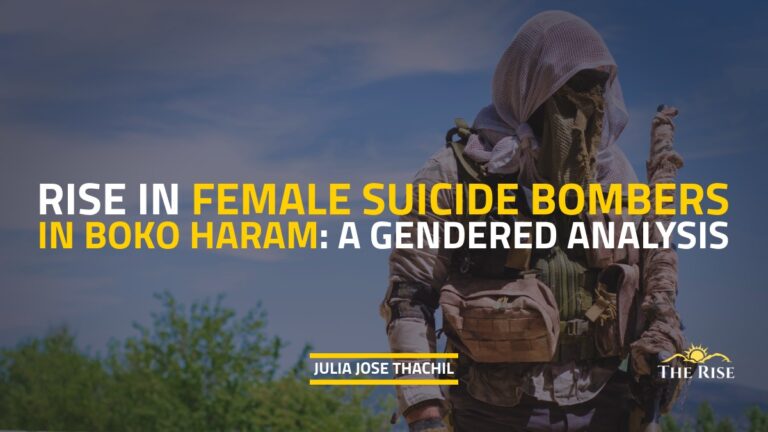
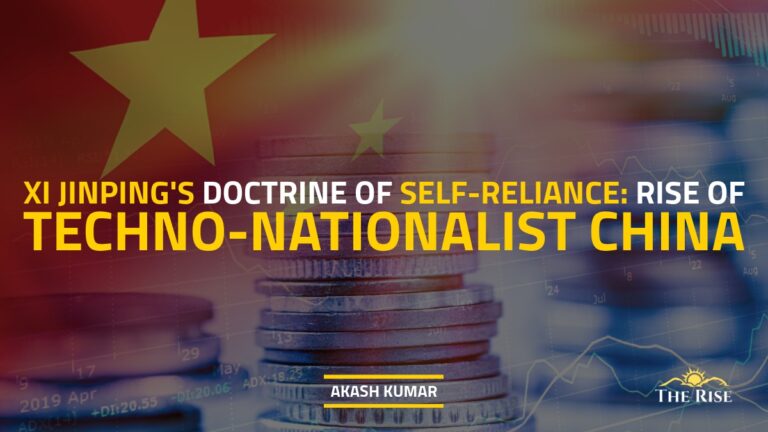
Pingback: The Chip War: US Restrictions, China's Ambitions
Pingback: Japan, The Land of Rising Militarism - TheRise.co.in
Pingback: China and West Cooperation: Is the Golden Era Over?
Pingback: Indo-China Great Power Competition in the Indo-Pacific: An Essay - TheRise.co.in
Pingback: Economic Linkages in South Asia - TheRise.co.in
Pingback: Changing Paradigm of BRICS-Growing Global Clout or 'Anti-West'?
Pingback: Biden Vs Trump 2024: The Geopolitics in USA's Politics